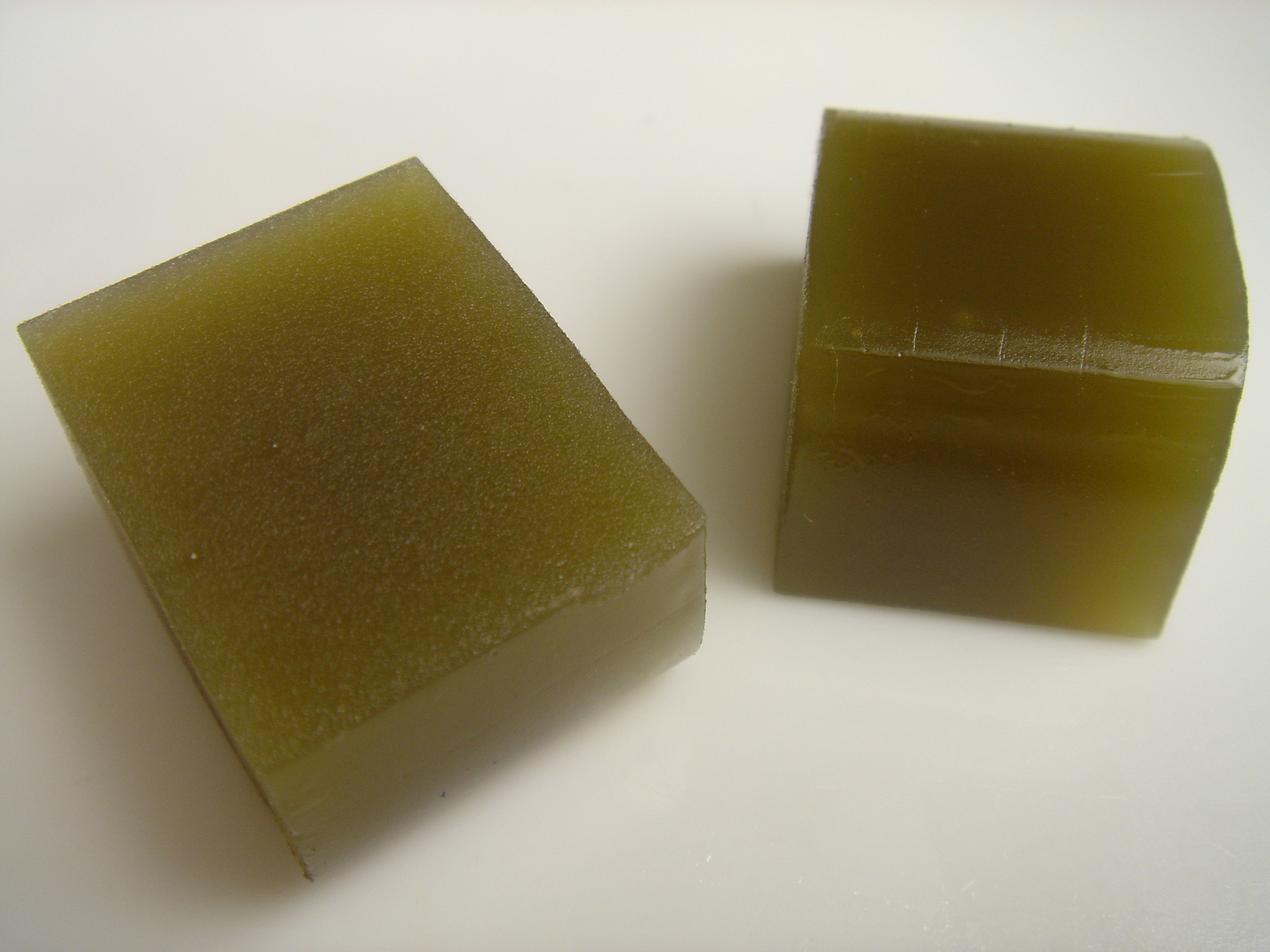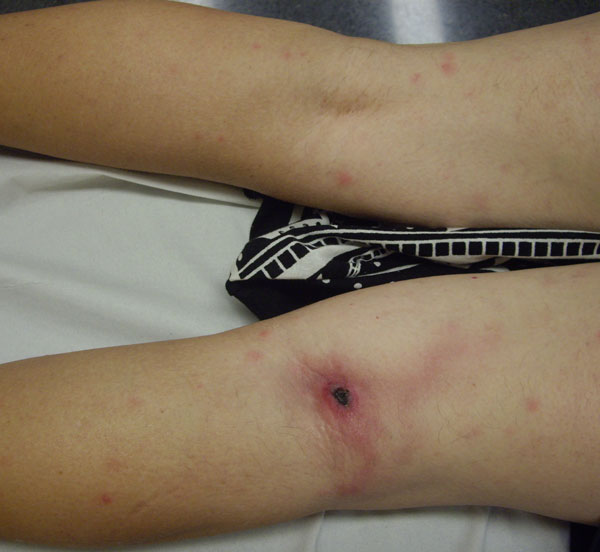|
Bacillus Anthracis
''Bacillus anthracis'' is a gram-positive and rod-shaped bacterium that causes anthrax, a deadly disease to livestock and, occasionally, to humans. It is the only permanent (obligate) pathogen within the genus ''Bacillus''. Its infection is a type of zoonosis, as it is transmitted from animals to humans. It was discovered by a German physician Robert Koch in 1876, and became the first bacterium to be experimentally shown as a pathogen. The discovery was also the first scientific evidence for the germ theory of diseases. ''B. anthracis'' measures about 3 to 5 μm long and 1 to 1.2 μm wide. The reference genome consists of a 5,227,419 bp circular chromosome and two extrachromosomal DNA plasmids, pXO1 and pXO2, of 181,677 and 94,830 bp respectively, which are responsible for the pathogenicity. It forms a protective layer called endospore by which it can remain inactive for many years and suddenly becomes infective under suitable environmental conditions. Because of the resilience ... [...More Info...] [...Related Items...] OR: [Wikipedia] [Google] [Baidu] |
Fuchsin
Fuchsine (sometimes spelled fuchsin) or rosaniline hydrochloride is a magenta dye with chemical formula C20H19N3·HCl."Basic chemical data" ''Discovery Series'' online database, Developmental Therapeutics Program, U.S. National Institutes of Health. Retrieved on 2007-10-08. There are other similar chemical formulations of products sold as fuchsine, and several dozen other synonyms of this molecule. It becomes magenta when dissolved in water; as a solid, it forms dark green crystals. As well as dying textiles, fuchsine is used to staining (biology), stain bacteria and sometimes as a disinfectant. In the literature of biological stains the name of this dye is frequently misspelled, with omi ... [...More Info...] [...Related Items...] OR: [Wikipedia] [Google] [Baidu] |
Haemoglobin
Hemoglobin (haemoglobin, Hb or Hgb) is a protein containing iron that facilitates the transportation of oxygen in red blood cells. Almost all vertebrates contain hemoglobin, with the sole exception of the fish family Channichthyidae. Hemoglobin in the blood carries oxygen from the respiratory organs (lungs or gills) to the other tissues of the body, where it releases the oxygen to enable aerobic respiration which powers an animal's metabolism. A healthy human has 12to 20grams of hemoglobin in every 100mL of blood. Hemoglobin is a metalloprotein, a chromoprotein, and a globulin. In mammals, hemoglobin makes up about 96% of a red blood cell's dry weight (excluding water), and around 35% of the total weight (including water). Hemoglobin has an oxygen-binding capacity of 1.34mL of O2 per gram, which increases the total blood oxygen capacity seventy-fold compared to dissolved oxygen in blood plasma alone. The mammalian hemoglobin molecule can bind and transport up to four oxygen ... [...More Info...] [...Related Items...] OR: [Wikipedia] [Google] [Baidu] |
Neutrophil
Neutrophils are a type of phagocytic white blood cell and part of innate immunity. More specifically, they form the most abundant type of granulocytes and make up 40% to 70% of all white blood cells in humans. Their functions vary in different animals. They are also known as neutrocytes, heterophils or polymorphonuclear leukocytes. They are formed from stem cells in the bone marrow and differentiated into subpopulations of neutrophil-killers and neutrophil-cagers. They are short-lived (between 5 and 135 hours, see ) and highly mobile, as they can enter parts of tissue where other cells/molecules cannot. Neutrophils may be subdivided into segmented neutrophils and banded neutrophils (or bands). They form part of the polymorphonuclear cells family (PMNs) together with basophils and eosinophils. The name ''neutrophil'' derives from staining characteristics on hematoxylin and eosin ( H&E) histological or cytological preparations. Whereas basophilic white blood cells ... [...More Info...] [...Related Items...] OR: [Wikipedia] [Google] [Baidu] |
Agar
Agar ( or ), or agar-agar, is a jelly-like substance consisting of polysaccharides obtained from the cell walls of some species of red algae, primarily from " ogonori" and " tengusa". As found in nature, agar is a mixture of two components, the linear polysaccharide agarose and a heterogeneous mixture of smaller molecules called agaropectin. It forms the supporting structure in the cell walls of certain species of algae and is released on boiling. These algae are known as agarophytes, belonging to the Rhodophyta (red algae) phylum. The processing of food-grade agar removes the agaropectin, and the commercial product is essentially pure agarose. Agar has been used as an ingredient in desserts throughout Asia and also as a solid substrate to contain culture media for microbiological work. Agar can be used as a laxative; an appetite suppressant; a vegan substitute for gelatin; a thickener for soups; in fruit preserves, ice cream, and other desserts; as a clarifying ... [...More Info...] [...Related Items...] OR: [Wikipedia] [Google] [Baidu] |
Microbiological Culture
A microbiological culture, or microbial culture, is a method of multiplying microorganism, microbial organisms by letting them reproduce in predetermined culture medium under controlled laboratory conditions. Microbial cultures are foundational and basic diagnostic methods used as research tools in molecular biology. The term ''culture'' can also refer to the microorganisms being grown. Microbial cultures are used to determine the type of organism, its abundance in the sample being tested, or both. It is one of the primary diagnostic methods of microbiology and used as a tool to determine the cause of infection, infectious disease by letting the agent multiply in a predetermined medium. For example, a throat culture is taken by scraping the lining of tissue in the back of the throat and blotting the sample into a medium to be able to screen for harmful microorganisms, such as ''Streptococcus pyogenes'', the causative agent of strep throat. Furthermore, the term culture is more ge ... [...More Info...] [...Related Items...] OR: [Wikipedia] [Google] [Baidu] |
Bacillus (shape)
Bacterial cellular morphologies are the shapes that are characteristic of various types of bacteria and often key to their identification. Their direct examination under a light microscope enables the classification of these bacteria (and archaea). Generally, the basic morphologies are spheres (coccus) and round-ended cylinders or rod shaped (bacillus). But, there are also other morphologies such as helically twisted cylinders (example '' Spirochetes''), cylinders curved in one plane (selenomonads) and unusual morphologies (the square, flat box-shaped cells of the Archaean genus '' Haloquadratum)''. Other arrangements include pairs, tetrads, clusters, chains and palisades. Types Coccus A coccus (plural ''cocci'', from the Latin ''coccinus'' (scarlet) and derived from the Greek ''kokkos'' (berry)), is any microorganism (usually bacteria) whose overall shape is spherical or nearly spherical. Coccus refers to the shape of the bacteria and can contain multiple genera, such as st ... [...More Info...] [...Related Items...] OR: [Wikipedia] [Google] [Baidu] |
Tetracycline Antibiotics
Tetracyclines are a group of broad-spectrum antibiotic compounds that have a common basic structure and are either isolated directly from several species of ''Streptomyces'' bacteria or produced semi-synthetically from those isolated compounds. Tetracycline molecules comprise a linear fused tetracyclic nucleus (rings designated A, B, C and D) to which a variety of functional groups are attached. Tetracyclines are named after their four ("tetra-") hydrocarbon rings ("-cycl-") derivation ("-ine"). They are defined as a subclass of polyketides, having an octahydrotetracene-2-carboxamide skeleton and are known as derivative (chemistry), derivatives of polycyclic naphthacene carboxamide. While all tetracyclines have a common structure, they differ from each other by the presence of chloro, methyl, and hydroxyl groups. These chemical modification, modifications do not change their broad antibacterial activity, but do affect pharmacological properties such as half-life and binding to pr ... [...More Info...] [...Related Items...] OR: [Wikipedia] [Google] [Baidu] |
Quinolone Antibiotic
Quinolone antibiotics constitute a large group of broad-spectrum bacteriocidals that share a bicyclic core structure related to the substance 4-quinolone. They are used in human and veterinary medicine to treat bacterial infections, as well as in animal husbandry, specifically poultry production. Quinolone antibiotics are classified into four generations based on their spectrum of activity and chemical modifications. The first-generation quinolones, such as nalidixic acid, primarily target Gram-negative bacteria and are mainly used for urinary tract infections. Second-generation quinolones introduced fluorine atoms into their structure, creating fluoroquinolones, which significantly expanded their antibacterial activity to include some Gram-positive bacteria. Third-generation fluoroquinolones further improved Gram-positive coverage, while fourth-generation fluoroquinolones offer broad-spectrum activity, including anaerobic bacteria. Only quinolone antibiotics in generat ... [...More Info...] [...Related Items...] OR: [Wikipedia] [Google] [Baidu] |
Penicillin
Penicillins (P, PCN or PEN) are a group of beta-lactam antibiotic, β-lactam antibiotics originally obtained from ''Penicillium'' Mold (fungus), moulds, principally ''Penicillium chrysogenum, P. chrysogenum'' and ''Penicillium rubens, P. rubens''. Most penicillins in clinical use are synthesised by ''Penicillium chrysogenum, P. chrysogenum'' using industrial fermentation, deep tank fermentation and then purified. A number of natural penicillins have been discovered, but only two purified compounds are in clinical use: benzylpenicillin, penicillin G (intramuscular injection, intramuscular or Intravenous therapy, intravenous use) and phenoxymethylpenicillin, penicillin V (given by mouth). Penicillins were among the first medications to be effective against many bacterial infections caused by staphylococcus, staphylococci and streptococcus, streptococci. They are still widely used today for various bacterial infections, though many types of bacteria have developed antibiotic res ... [...More Info...] [...Related Items...] OR: [Wikipedia] [Google] [Baidu] |
Louis Pasteur
Louis Pasteur (, ; 27 December 1822 – 28 September 1895) was a French chemist, pharmacist, and microbiologist renowned for his discoveries of the principles of vaccination, Fermentation, microbial fermentation, and pasteurization, the last of which was named after him. His research in chemistry led to remarkable breakthroughs in the understanding of the causes and preventions of diseases, which laid down the foundations of hygiene, public health and much of modern medicine. Pasteur's works are credited with saving millions of lives through the developments of vaccines for rabies vaccine, rabies and anthrax vaccine, anthrax. He is regarded as one of the founders of modern bacteriology and has been honored as the "father of bacteriology" and the "father of microbiology" (together with Robert Koch; the latter epithet also attributed to Antonie van Leeuwenhoek). Pasteur was responsible for disproving the doctrine of spontaneous generation. Under the auspices of the French Aca ... [...More Info...] [...Related Items...] OR: [Wikipedia] [Google] [Baidu] |
Perspiration
Perspiration, also known as sweat, is the fluid secreted by sweat glands in the skin of mammals. Two types of sweat glands can be found in humans: eccrine glands and Apocrine sweat gland, apocrine glands. The eccrine sweat glands are distributed over much of the body and are responsible for secreting the watery, brackish sweat most often triggered by excessive body temperature. Apocrine sweat glands are restricted to the armpits and a few other areas of the body and produce an odorless, oily, opaque secretion which then gains its characteristic odor from bacterial decomposition. In humans, sweating is primarily a means of thermoregulation, which is achieved by the water-rich secretion of the eccrine glands. Maximum sweat rates of an adult can be up to per hour or per day, but is less in children prior to puberty. Evaporation of sweat from the skin surface has a cooling effect due to evaporative cooling. Hence, in Temperature, hot weather, or when the individual's muscles hea ... [...More Info...] [...Related Items...] OR: [Wikipedia] [Google] [Baidu] |
Eschar
Eschar (; ; ; or ''an'' eschar) is a slough or piece of necrosis, dead tissue that is cast off from the surface of the skin, particularly after a Burn, burn injury, but also seen in gangrene, Ulcer (dermatology), ulcer, mycosis, fungal infections, Loxoscelism, necrotizing spider bite wounds, tick bites associated with spotted fevers and exposure to cutaneous anthrax. The term ‘eschar’ is not interchangeable with ‘scab’. An eschar contains necrotic tissue whereas a scab is composed of dried blood and exudate. Black eschars are most frequently attributed in medicine to cutaneous anthrax (infection by ''Bacillus anthracis''), which may be contracted through herd animal exposure and also from ''Pasteurella multocida'' exposure in cats and rabbits. A newly identified human rickettsial infection, ''R. parkeri'' rickettsiosis, can be differentiated from Rocky Mountain spotted fever by the presence of an eschar at the site of inoculation. Eschar is sometimes called a ''black w ... [...More Info...] [...Related Items...] OR: [Wikipedia] [Google] [Baidu] |






